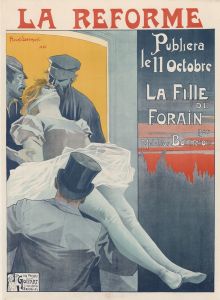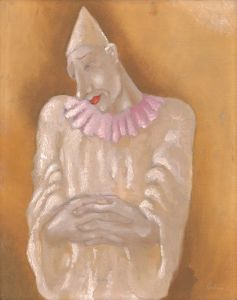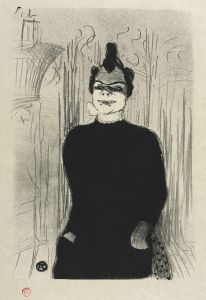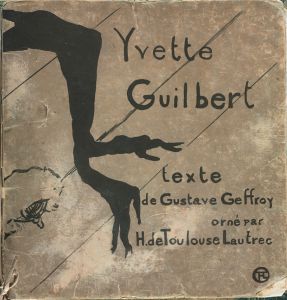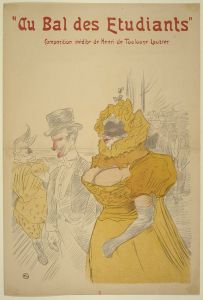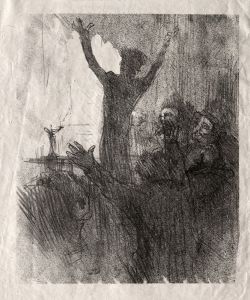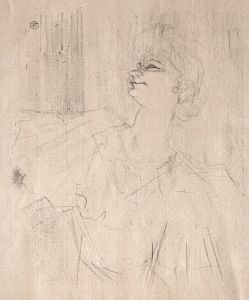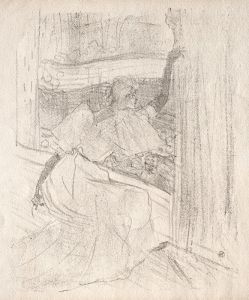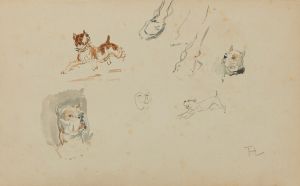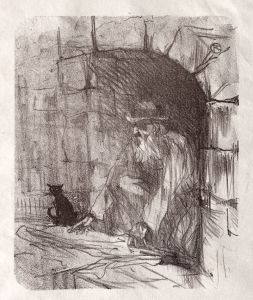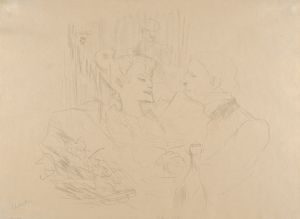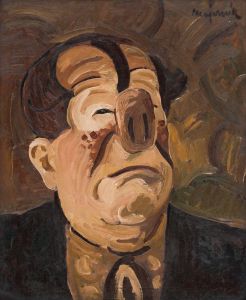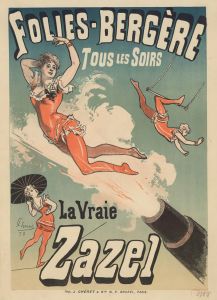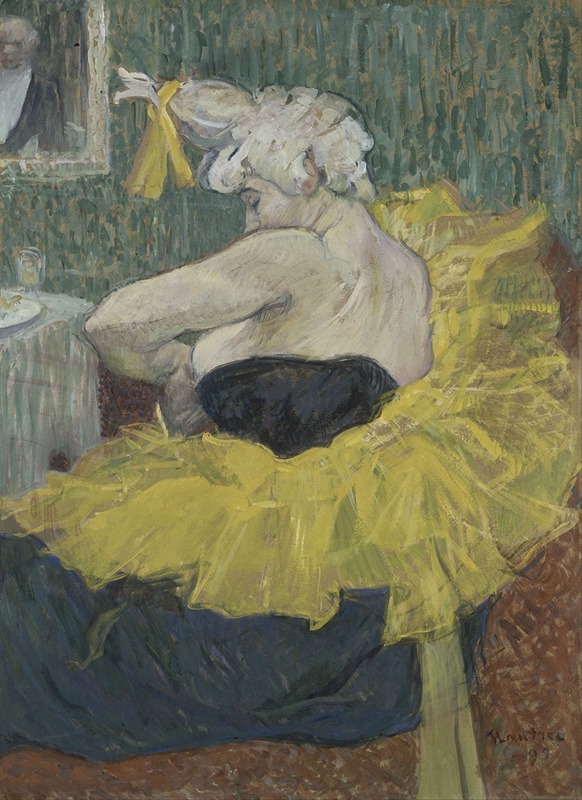
The Clown Cha-U-Kao
A hand-painted replica of Henri de Toulouse-Lautrec’s masterpiece The Clown Cha-U-Kao, meticulously crafted by professional artists to capture the true essence of the original. Each piece is created with museum-quality canvas and rare mineral pigments, carefully painted by experienced artists with delicate brushstrokes and rich, layered colors to perfectly recreate the texture of the original artwork. Unlike machine-printed reproductions, this hand-painted version brings the painting to life, infused with the artist’s emotions and skill in every stroke. Whether for personal collection or home decoration, it instantly elevates the artistic atmosphere of any space.
Henri de Toulouse-Lautrec, a prominent French painter of the Post-Impressionist period, is renowned for his vivid portrayals of Parisian nightlife in the late 19th century. One of his notable works, "The Clown Cha-U-Kao," exemplifies his fascination with the vibrant and often eccentric world of performers and entertainers. Painted in 1895, this piece captures the essence of the cabaret scene that was central to Toulouse-Lautrec's artistic vision.
"The Clown Cha-U-Kao" is a depiction of a female clown, a character who was a regular performer at the Moulin Rouge and other popular venues in Paris. Cha-U-Kao, the subject of the painting, was a well-known figure in the Parisian entertainment circuit. Her stage name is a play on words, derived from the French term "chahut-chaos," which refers to a lively and chaotic dance. This reflects the energetic and often tumultuous nature of the performances she was involved in.
In the painting, Toulouse-Lautrec employs his characteristic style, marked by bold lines and a keen attention to detail, to bring Cha-U-Kao to life. The composition is intimate, focusing closely on the figure of the clown, who is depicted in her flamboyant costume. Her attire is typical of the era's circus and cabaret performers, featuring bright colors and exaggerated forms that draw the viewer's eye. The use of color in the painting is particularly striking, with vibrant yellows and reds that convey the lively atmosphere of the performance space.
Toulouse-Lautrec's portrayal of Cha-U-Kao is notable for its empathetic and humanizing approach. Unlike many of his contemporaries, who often depicted performers as mere spectacles, Toulouse-Lautrec was known for his ability to capture the personalities and emotions of his subjects. In "The Clown Cha-U-Kao," this is evident in the nuanced expression on the clown's face, which suggests a depth of character beyond her role as an entertainer.
The painting also reflects Toulouse-Lautrec's broader interest in the lives of those on the fringes of society. His work frequently focused on individuals who were marginalized or overlooked, including performers, prostitutes, and other denizens of the Montmartre district. Through his art, Toulouse-Lautrec offered a glimpse into their world, characterized by both its vibrancy and its underlying melancholy.
"The Clown Cha-U-Kao" is housed in the Musée d'Orsay in Paris, where it remains a testament to Toulouse-Lautrec's unique artistic vision and his enduring fascination with the world of performance. The painting is celebrated not only for its technical skill but also for its ability to convey the complex interplay of joy and sadness that defined the lives of its subjects.
In summary, "The Clown Cha-U-Kao" is a quintessential example of Henri de Toulouse-Lautrec's work, highlighting his mastery of color and form, as well as his empathetic approach to portraiture. Through this painting, Toulouse-Lautrec captures the spirit of the Parisian cabaret scene and offers a poignant reflection on the lives of those who inhabited it.





